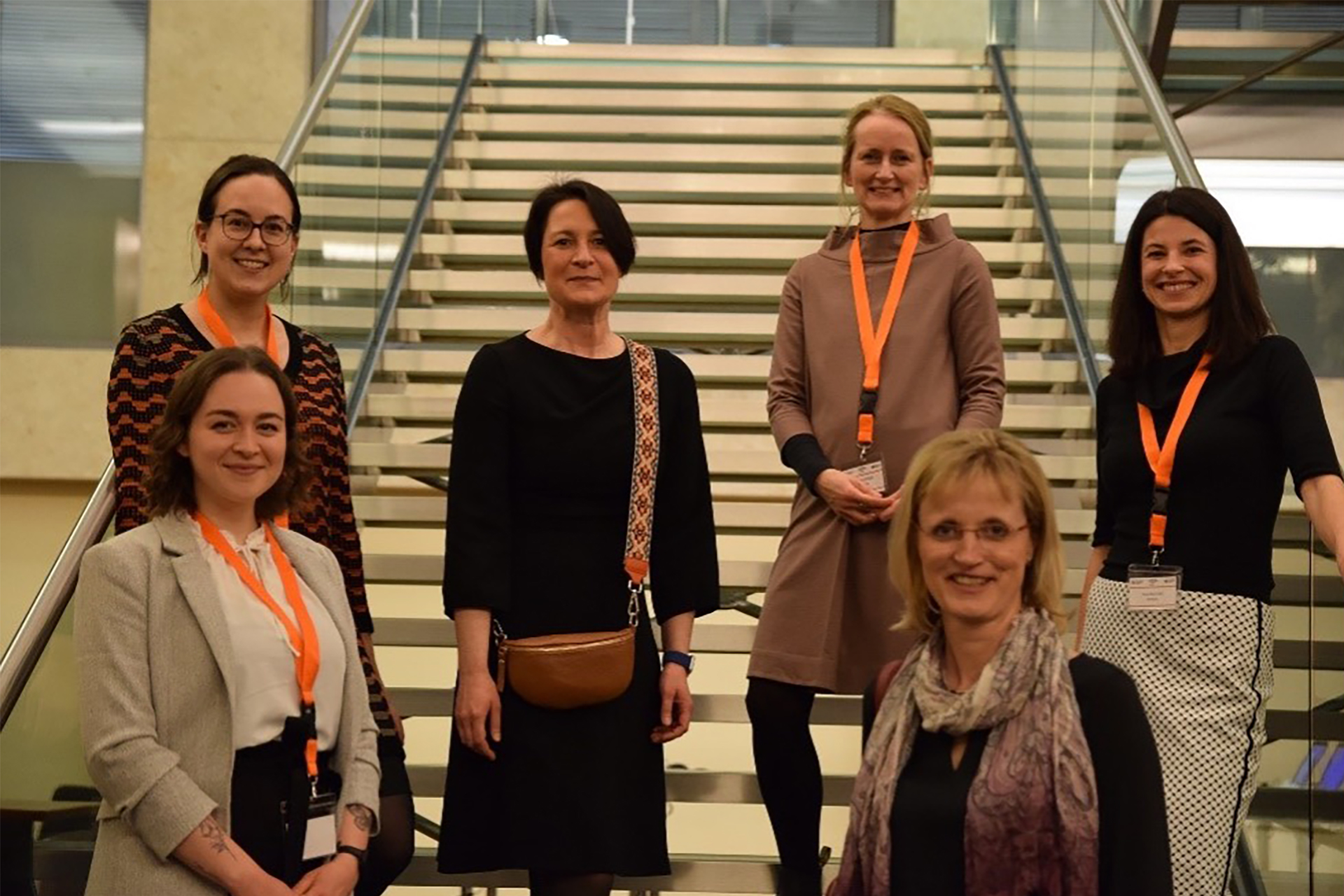Editor’s Note: This article is intended for information purposes only. Because state and municipal laws vary greatly, as do the circumstances of individual cases, readers are advised to contact an attorney for specific legal advice. The views and opinions expressed here are those of the author(s) and contributor(s) and do not necessarily reflect those of the publisher and editors of WholeFoods Magazine.
It had been three-and-a-half years since the Codex Committee on Nutrition and Foods for Special Dietary Uses (CCNFSDU) had last met in person. Because of the unnecessary panic attacks, economy-destroying lockdowns, and silly “social distancing” imposed by governments upon much of the World’s population during the 2020-2022 COVID-19 pandemic scare, this and many other Codex Committees had only met by remote Zoom video sessions during those years. So, it was a refreshing change to see familiar faces in person among the delegates assembling for the Nutrition Committee meeting in Düsseldorf, Germany the week of March 6-10, 2023.
The National Health Federation (NHF) delegation at this meeting consisted of Younis-Louis Amadid—a young student studying international relations and political sciences at ILERI, a private university in Lyon, France—and me, as the NHF delegation head. A smaller meeting this first year back, we were joined by only 60 member countries and 28 other INGOs. The Chairwoman was once again Dr. Anja Brönstrup, supported by her new Co-Chairwoman, Ms. Martine Püster. The Codex Alimentarius Commission Chairman Steve Wearne and the Codex Secretary Tom Heilandt were also present, both of whom gave opening remarks to the Committee.
The two “big” issues at this meeting were expected to be: (1) the final push for adoption of a standard for Follow-up Formula for infants and older children; and (2) the establishment of nutrient reference values (NRVs) for persons aged 6-36 months. Indeed, the Chairwoman had wisely set aside plenty of time for the delegates to discuss both issues. Yet, as it turned out, they were resolved in record time. Although at the end of the meeting the Chairwoman was gracious enough to give the credit to the delegates, it was obvious to me (and many others) that the credit belonged to her.
NRVs for Persons Aged 6-36 Months
Curiously, the general meeting did not begin on Monday, March 6th. Rather, that day began bright and early with a Physical Working Group (PWG) meeting ably chaired by Irish delegate Dr. Mary Flynn to discuss the general principles for setting the NRVs for Vitamins A, D, C, K, and E, thiamine, riboflavin, niacin, Vitamins B6 and B12, folate, pantothenic acid, biotin, calcium, magnesium, iron, zinc, iodine, copper, selenium, manganese, phosphorus, and potassium for these older infants and young children. And, even then, since this was really only the first tentative step in the process, the PWG was given the narrow task of just addressing the first several nutrients and making suggestions to the regular Committee when it began meeting the following day. (Although a PWG’s recommendations to the full Committee do not have to be followed, they generally are.)
The PWG attendees debated definitions and orders of priority for the handful of (Codex) Recognized Authoritative Scientific Bodies (RASBs) to dictate the NRVs, with many wanting the World Health Organization (WHO) to trump any and all other RASBs for any NRVs to be set by Codex.
NHF took, of course, the contrarian view and stated that it should be whoever had the best science supporting its position and there should be no special status given to WHO over any other scientific body. If anything, we all know that WHO has proven itself hopelessly inept and flat out wrong in its strategic “handling” of the COVID-19 pandemic. Why should it be considered any better at setting NRVs?
One of the proposed definitions, “Adequate Intake,” was much discussed by the delegates. Typically, the definition reads as follows, “Adequate intake (AI) is a recommended intake based on observed or experimentally determined approximations or estimates of nutrient intake by a group (or groups) of apparently healthy people that are assumed to be adequate for persons aged 6-36 months.”
“Assumed to be adequate”? I spoke up and observed that this was a meaningless definition because it was circular—essentially stating nothing more than that “adequate intake is intake of healthy people assumed to be adequate.” The PWG admitted that the definition needed revision.
Even though everyone seemed to think that the General Principles should be applied with “a scientific, evidence-based approach” to establish the NRVs, it was clear that—once again—Codex delegate views on the NRV levels for the various vitamins and minerals were childishly quaint. The proposed NRV for Vitamin B12 is to be set from 0.5 to 0.9 micrograms per day. And the proposed NRV for Vitamin C is a miserly 20-24 mg/day. The other proposed levels are equally ludicrous to support optimal health in a developing child, including 70-90 micrograms/day for iodine; so, it stuns me that a Nutrition Committee whose vast majority of delegates are women, many of whom are presumably even mothers, would be so incredibly blind or careless as to the true nutrient needs of growing children.
Fortunately, there was one brief ray of sunshine streaming through the gathering clouds when the PWG Chairwoman wisely and correctly observed that, “Scientific rigor doesn’t cover everything.” It certainly doesn’t; and NHF will continue to argue, as it did there, that these NRV levels must be adjusted upwards if we truly want healthy children.
Sadly, NHF will need to fight this battle on its own since neither the International Alliance of Dietary Supplement Associations (IADSA) nor the Council for Responsible Nutrition (CRN) seemed inclined to take a position on these levels. In fact, at this meeting they were both as silent as a tomb.
This meeting was the opening round of work and will proceed as a multi-year discussion, as the Committee itself acknowledged by its parceling up of the nutrients whose NRVs are to be discussed and established. This approach tracks with the method Codex had employed earlier to push forward the adult vitamin-and-mineral NRVs.
 The German Secretariat © FAO/Codex
The German Secretariat © FAO/Codex
New Work Proposals for CCNFSDU
On Monday afternoon, the PWG reconvened and took up “New Work” and other proposals. Multiple items were covered, both at the PWG and then in the following four days of the regular Committee meeting.
1. Folic Acid. The Swiss delegation championed broadening the permitted food uses of the folic acid source calcium-l-methylfolate in all foods for special dietary uses for infants and young children. This proposal sailed through both the PWG and later the Committee itself without a single objection.
2. Ascorbyl palmitate & Tocopherols. For the proposed use of ascorbyl palmitate (fat-soluble Vitamin C) and mixed tocopherol concentrate in all types of infant formula, NHF was their strongest proponent, arguing that their use was technologically justified as necessary to protect oils in the formula from going rancid, and that these compounds were safe vitamins. Both the PWG and, later, the Committee, agreed and designated them as technologically justified.
3. Probiotics. On the surprisingly controversial issue of prioritizing the work to establish harmonized guidelines for the use of probiotics in foods and food supplements, Argentina, Malaysia, China, Singapore, India, Saudi Arabia, Indonesia, Uganda, Kenya, Egypt, Sudan, and of course the International Probiotics Association (IPA) pushed hard for this new work to be given priority. Opposed were Australia, Chile, Costa Rica, Libya, Norway, Canada, the U.S., IADSA, CRN, and the anti-vitamin consumer groups IBFAN, ENCA, and ILCA. NHF argued that while it was true that there were significant challenges in creating guidelines, it would not be impossible. The PWG Chairwoman suggested that an electronic working group (EWG) be created to further refine and clarify the proposed new work. This suggestion was adopted later in the week by the full Committee.
4. Insect Food. Inevitably, the proposed “Guidelines including General Principles for the Nutritional Composition of Foods and Beverages made from Plant-based and other Alternative Protein Sources,” submitted by Canada and the United States, came before us for discussion, just as it had before in previous committees. “Alternative protein sources” is of course the new code word for an insect-based food supply slated to replace or augment traditional Western-based diets. The entire infrastructure is being created for us to eat insects as a protein source instead of animals, at least for the peasants. The Elite will eat as they always do. “Just us” is what they are really saying when they argue that they are for “Justice.”
At both the PWG and regular CCNFSDU sessions, NHF argued against the need for any insect food categories. While ENCA and IBFAN were focused upon fighting the highly processed plant-based protein sources—with the ENCA delegate even taking a slap at NHF by professing that “fried crickets are delicious!”—I was the sole person to argue against insect food, asking the PWG delegates, “What is really meant by ‘alternative protein sources’? Do they mean ‘Micro-Livestock’? Is this evidence of a ‘Let Them Eat Crickets’ mentality that we see spreading around the World? Many people have allergies and simply cannot consume insects. If you go forward with this, you will be opening a whole can of worms.” The room erupted in laughter at the last sentence. So, there is some sense of humor at Codex meetings after all.
Three days later, to the full Committee, I argued once more against insect food, stating that “parasites in insects and human allergies to insects are common and widespread. Moreover, it is strange that we struggle so hard to keep insect infestation out of our food supply while at the same time promoting insect consumption here. We need to deal with the tremendous problem of food wastage first before we even start considering alternative food sources.”
In the end, CCNFSDU agreed that Canada and the United States would refine the scope of the proposal before re-presenting this new work at the next CCNFSDU meeting. I was left wondering about the identities of the people or groups truly pushing this insect-food agenda.
Follow-up Formula
In development, discussion, and debate for over 10 years, including eight EWGs and two physical working groups, 19 consultation papers, eight agenda papers, two scientific reports from the Food and Agriculture Organization (FAO) and one from a Codex scientific body on protein quality and nitrogen conversion factors, the revised “Standard for Follow-up Formula for Older Infants and Product for Young Children” was expected to take up most of the time available for the Committee. Instead, the feared, drawn-out battle over this standard fizzled out, with Chairwoman Brönstrup adroitly steering the entire committee to an agreed-upon conclusion in less than one day.
At one time, various baby-formula consumer groups had been buzzing all over this topic like flies on cow patties, while Nestle and other business-interest groups defended the formula that many others claimed was nothing more than a marketing ploy to sell more formula to a largely untapped, older-infant market segment that would normally have transitioned to their culture’s indigenous diet. On this issue, both sides have claimed victory—the industry with its having achieved a Codex standard and the baby-formula consumer groups with their having shackled the standard to the stricter guidelines of the WHO and World Health Assembly.
Politics over Science
As before, Australia, Canada, the European Union, the United Kingdom, and the United States all submitted Conference Room Documents condemning Russia’s actions in Ukraine. Whatever one’s views on the subject, Codex Alimentarius is a scientific body and not a political forum. These submissions are therefore entirely inappropriate in this forum. We do note, however, that, unlike last year, New Zealand did not join in.
Had I been able to stay for the last day of the meeting, I would have voiced a verbal objection to these political “CRDs” when “Other Business” was discussed by the delegates, just as I did at the last Codex Committee on Pesticide Residues virtual meeting held in July 2022. Unfortunately, another meeting required me to leave, so, these CRDs went unchallenged. Politics continues to reign over science, in all its forms.
Final Observations
All in all, this year’s Nutrition Committee meeting was a well-behaved and rather tame event. Well-run by the Chairwoman and her equally impressive co-Chairwoman, as well as by the Codex Secretariat, this meeting was the least controversial or argumentative that I have attended in a very long time. Regardless, it is still possible to make an impact at each of these Codex meetings and that is something I will continue to do. WF










